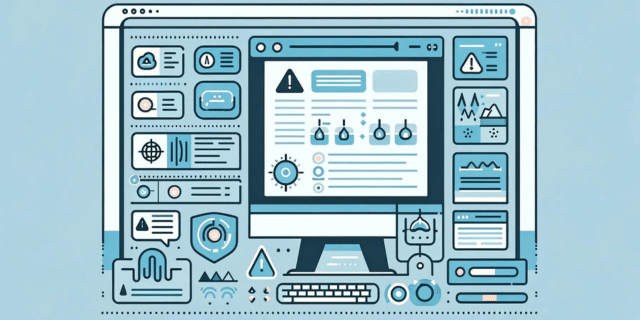For SaaS companies across the world, downtime is a major cost. You lose reputational brownie points, productivity and, more crucially, hard-earned revenue.
Today, the uptime experts will be taking a look at impacts, causes and, most crucially, fixes.
Understanding the impacts and causes of downtime for SaaS companies and products
The impacts of SaaS downtime
Most SaaS companies will experience downtime at some point. But you might not be fully aware of the various ways this can impact your business. From bad to worse, we have:
Employee productivity and business operations
If your SaaS application is down for your customers, it may be down for you, too. In this scenario, your normal operations will be disrupted, leading to wasted dev and engineer time.
Reputational damage
One reason SaaS is the delivery model of the moment is the low customer buy-in. But this is a sword with two sharp edges.
If your application gains a rep for dropping out, it’s no bother for end users to go elsewhere.
Legal issues
While you may breach your user SLAs (service level agreements) if your app is down for too long, legally greased exit chutes for unhappy customers may be the least of your worries.
Both GDPR (in the EU) and the CCPA (California Consumer Privacy Act) in the US require the continuous protection of data, which may not be possible in the event of an outage.
Fall foul of these laws, and you’re in for some real trouble.
Financial impacts
Business downtime, loss of customers and potential lawsuits all add up to the no. 1 existential threat for SaaS vendors and businesses everywhere: loss of revenue.
So, now you’re sufficiently glum, let’s look at the causes of downtime before we get on to what we can do about it.
The causes of SaaS downtime
Downtime can occur for a variety of reasons, some of which are relatively benign. Planned outages might be a result of migrations, maintenance or patching.
Unplanned outages, on the other hand, pose a significant threat.
Security Issues
DDoS (distributed denial of service) attacks seek to overwhelm their target with a plethora of bots. Then you have ransomware, SQL injections and a host of other malicious intentions.
Generally, cyber-attacks are the result of rivals playing dirty, hackers hellbent on destruction for its own sake or even for the sake of a political ideology.
Cloud issues
The cloud services your SaaS application runs on might end up being the weakest link in the chain. Improper auto-scaling configuration, misallocation of resources or even provider-wide outages all lead to downtime.
Application and code issues
SaaS services can be impacted by coding errors, glitches and bugs, like any other application. These can all lead to partial loss of service or downtime across the whole application.
Third-party integration issues
As applications grow more distributed, third-party services are more closely integrated into our key offerings than ever before. It might be your payment portal, an API connection to Google Maps or a code repository.
A single point of failure can cause a ripple that pulls down the entire app.
So what can you do? Fixes for SaaS downtime
Ensuring uptime or precluding downtime is a holistic process. It covers how your infrastructure is built on day one as well as how you handle support tickets on day ten thousand.
You can approach it as an in-house project, upskilling your current team to implement the latest and greatest in downtime prevention; or you can outsource the issue entirely, handing over responsibility for service outages to a specialist team.
How you deal with the issue will depend on what downtime cost means to your organisation, the skills and tooling you have in-house, the nature of your overall tech stack and where failures tend to crop up.
However, whether outsourcing or going at it DIY, many of the major strategies share an outline.
Monitoring
Monitoring your SaaS application is vital both for seeing when it goes down as well as why it goes down.
There are many monitoring tools on the market with varying levels of focus. Some broad; some narrow, focussing on specific infrastructure components or general uptime.
You’ll want a tooling solution that allows you to monitor the application itself, your infrastructure, your security and, depending on your stack, any third-party integrations.
Tools like Site24x7 are a good place to start. But you could just as easily hand the issue over to a specialist monitoring and support team.
Building reliable cloud infrastructure
Building reliable cloud services can help you prevent downtime altogether.
Some architectures are inherently more fault-tolerant than others (microservices vs. monolith, for example).
You can also implement autoscaling, load balancers, disaster recovery and CDNs to help your SaaS solution cope with heavy traffic conditions. Your ‘ideal’ architecture will depend on a variety of factors, but building right in the beginning can help ensure business continuity and happy customers further down the line.
Outsourcing
24/7 support and incident management (IM) can be outsourced to a third party. And the search for a best-in-show provider may be shorter than you think; wink, nudge.
In essence, third-party support and IM companies take on the role of monitoring, reporting, fixing and communications.
They’re purpose-built for the job, often boasting proprietary support software, a robust comms and culture for truly 24/7 support and a broad range of knowledge allowing them to monitor and triage the entire stack.
Every provider will offer a range of SLAs detailing response time, time to resolution, etc. So it’s just about finding the team that can support what you’ve got when you need it.
Keep yourself secure
Keeping your SaaS application safe from attack is an obvious priority.
Your exact security needs will depend a great deal on your individual set-up: are you on public cloud? Does your SaaS tool handle legislated data such as personal healthcare information? Where are you based?
Security can also be delivered as a service alongside 24/7 support.
Adopt automation
SaaS providers can help ensure uptime by adopting automated, error-proof processes through CI/CD.
Again, this is outsourceable and in-house-able. A well-implemented DevOps/DevSecOps culture means fewer organisational silos, instantaneous testing and bug-fixing processes and far few instances of human mistakes.
For a nice and thorough look at how DevOps can enrich incident management and support go here.
How we can help
Just After Midnight are the go-to support partner for SaaS and digital product companies. With full-stack engineers spread across the globe, the best SLAs in the business and a great track record supporting SaaS products, we can resolve downtime in minutes and ensure you keep on delivering for your customers.
Read more about how we support SaaS companies or check out our packages.




